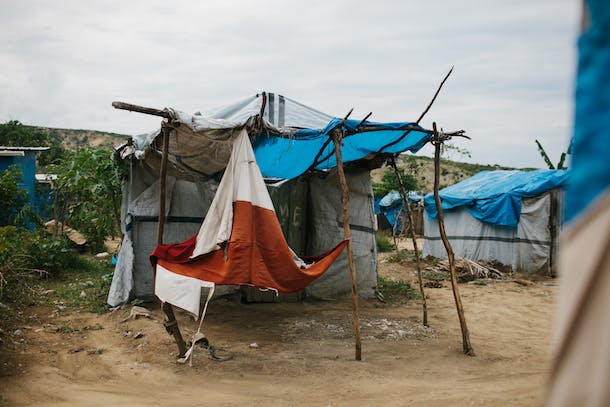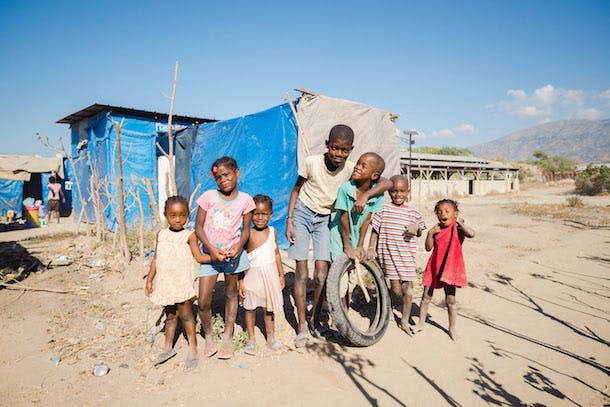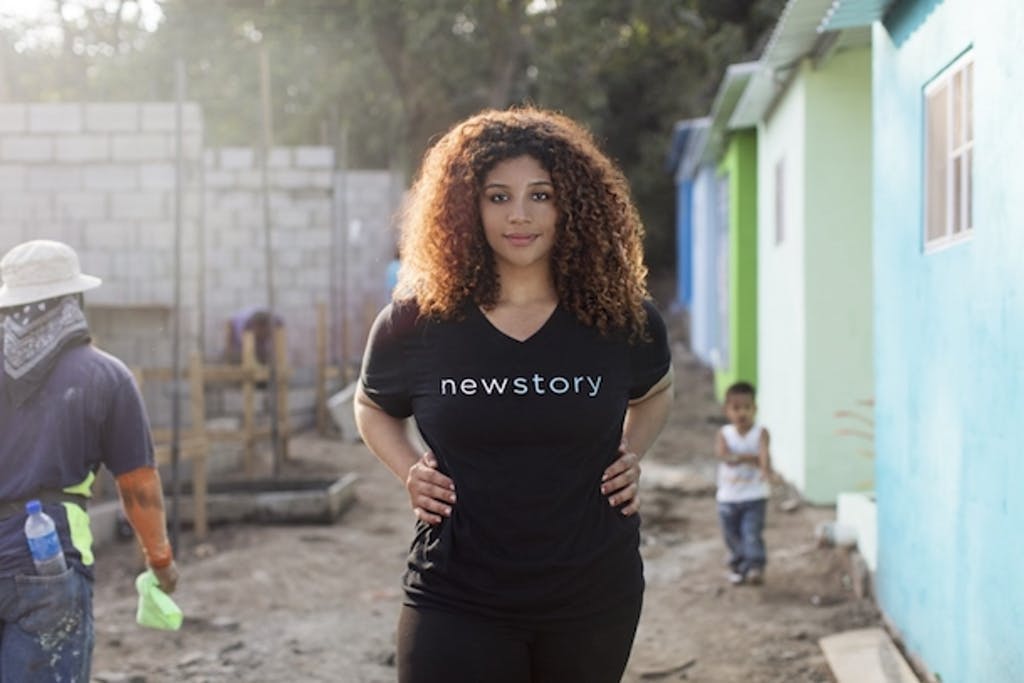Alexandria Lafci was 24 years old and stuck in a job she hated when she decided to pursue an unlikely dream: Building homes for families in need around the globe. She had learned so much in her first job out of college and now she wanted to apply that experience: The Teach for America alumna had seen firsthand how homelessness affects a child’s mental, emotional, and physical well-being: Nearly one-third of the students she taught in Washington, D.C. experienced homelessness at some point during the school year.
So together with her co-founders, Alexandria launched New Story, a nonprofit that is transforming slums into sustainable communities by harnessing the power of 3D-printing technology. In 24 hours, their organization can “print” a new, 600-square-foot home for under $4,000. So far, they’ve constructed homes in Haiti, Mexico, and Bolivia. By next summer, the organization hopes to build an entire community of 100 homes in El Salvador.
The United Nations Foundation’s Chief Communications Officer Rajesh Mirchandani met Alexandria last month at the UN’s High-Level Political Forum on Sustainable Development. The week-long summit served as a global show-and-tell of sorts, allowing policymakers, entrepreneurs, and activists to share innovative solutions and lessons learned about how we can address global challenges and achieve the Sustainable Development Goals (SDGs).
Rajesh spoke to Alexandria about how she turned her personal passion into global action and why affordable and dignified housing will be crucial for realizing the SDG’s promise to “leave no one behind.”

New Story co-founder Alexandria Lafci. Photo by Braden Summers
Rajesh: How did you get interested in the issue of homelessness?
Alexandria: My mother grew up in foster care. So from her and her siblings, I heard about what housing instability can do to mental and physical health and overall stability.
And then I was actually a Teach For America educator in Washington, D.C. and about a third of my students were homeless for either all or part of the year, so I directly got to see how that impacted the students and their families.
In 2014, I met my co-founders and they told me about families in Haiti. Four years after the earthquake, families were still living in the same thin tarp tents that they were given immediately after that disaster. So it really just started with wanting to build a few homes for those families that we met in Haiti. Fast forward to today and we’ve created over 6,500 homes. Now I’m trying to bring tech solutions to make the sector more effective and productive.
Rajesh: How did you come up with the idea of 3D-printing homes?
Alexandria: We built those 6,500 homes through traditional methods, but we realized we were growing incrementally. So how can we have an exponential impact, not just for us but for this sector. There are a lot of organizations and governments that are building homes. How can we help all of them? So we asked ourselves, Can we build homes faster? Can we build them less expensively without sacrificing quality and even increasing quality?
After a lot of research and talking to people, 3D-printing just kept rising to the top. Then we met a construction technology company called ICON and we developed a 3D-home printer with them in a few months. It’s unique in that it’s meant to work specifically in the areas that we work, in places like rural Haiti where there is very rugged terrain, using locally available materials, being very easy to transport, being very easy to operate.

A tent home in Leveque, Haiti. (Photo credit: New Story/Adam Brophy)
Rajesh: What was the reason for working in countries around the world?
Alexandria: So for New Story specifically, my co-founder had gone and volunteered in Haiti. That’s how he first became aware of that specific issue. So it made sense through the relationships that we had to work and start in Haiti.
For my experience, I went on a trip to Peru when I was 15 years old so that’s when I got passionate about international development. It’s what I studied in college and since then I’ve worked on land reform issues in Africa and microfinance in central America. So my deep passion is poverty alleviation and international development.
Rajesh: It’s quite a big deal to go from Teach for America to setting up an organization that’s actually building homes. I think a lot of people will be impressed or daunted and would think, “Oh, I couldn’t possibly do that.” So how do you tell them that you can do this too?
Alexandria: Yeah, I did not fancy myself as an entrepreneur necessarily. One fun fact is that when my two co-founders and I started New Story, we were all 24 years old. I think when people have a big idea, they think of the big idea and that can be very daunting. If we started thinking about 3D-home printing or let’s get close to 2,000 homes built, I think we would have never started, right? You get paralyzed by how big that goal is.
But we didn’t start that way. We said, “Can we build a few homes for the families we had met in Haiti? And can we build a better donor experience?” Those are the two tenets that we started with. We felt like, Yes, we could do those two things and then it really grows from there and you increase your ambitions from there.
So I’d say think big and have a lofty goal, but then break it down into those smaller steps. And ask yourself: What can I do in the next three to six months that would let me know if this is something I want to continue building?
![]()
A community rendering of New Story’s 3D-printed homes. (Photo credit: New Story)
Rajesh: So tell us about the 3D-printed homes. How far are you taking that idea?
Alexandria: This is not a thing from science fiction, 3D-home printing is already here. There are a number of organizations that are working with 3D structure-building. The reason why what we’re doing is significant is because those are typically for-profit motivations. We designed our printer to work for our context. It’s printing houses and early next year we’ll be printing an entire community in El Salvador. A community of 100-plus homes will be finished by the summer of 2019.
Rajesh: I want to rewind and have you listen to what you just said: “Early next year we will be printing an entire community.” What does it sound like when you hear yourself say that?
Alexandria: You know, I’m just so into the day-to-day issues like, “Let’s get land for this,” or getting into countries through customs. I think too often when we’re working on big problems or exciting things, we’re so deep in the nitty gritty that we don’t zoom out and really appreciate the magnitude of what’s happening, but it is incredibly exciting.
I won’t understate how the construction industry typically doesn’t innovate. The nonprofit sector — unfortunately, the sector I love— typically does not innovate. And so to do something of this magnitude, I think is not only significant for housing. This is a major step. It’s a quantum leap in how housing can been built, but I really hope this is a signal to other nonprofits working on different issues on how they can just take bigger swings to try to get breakthroughs in how they look at their issue area.

Children stand in front of a tent slum in Haiti. (Photo credit: New Story/Adam Brophy)
Rajesh: You’ve created a solution from a personal passion, from one idea. And housing is included in the Sustainable Development Goals. If you help people get access to sustainable and affordable housing, you could help them make progress in so many other goals as well. How much of that drives you?
Alexandria: That is really what got me into this work. Back in 2014, my co-founder and I were talking about building houses in Haiti. For me, because of those previous experiences with my mother as an educator, I was aware that housing has this broad-reaching impact. So that’s actually how I came into this work.
Already, we’ve seen the impact on students’ school performance and attendance. We’ve seen its impact on people’s mental and physical health, as I’m sure you can imagine. We’ve seen entrepreneurship crop up in the communities that we’re working in.
I have really started to believe that housing is a prerequisite for having a high-quality life. When we think of life’s basic needs, we tend to think of water and food. Shelter is there too. And it really is paramount in order to live a quality life.
Rajesh: So for people who might be listening to you speaking about this who are thinking “Oh, I can’t do that, I can’t do what she’s done,” what do you say to them? How do you go from taking a personal passion and turning it into an SDG solution?
Alexandria: I was 24 years old in a job that I actually hated when I started this. And again, I think it’s important to think big, but then work on what the immediate tangible steps are. And get a good group of people around you. I do know people who’ve started organizations as one person, but that’s a very lonely place to be. And so probably my two biggest pieces of advice would be find people who are just as passionate as you— whose values are aligned with yours—to work alongside and then start small.
To learn more about the individuals and innovations that are driving global progress, listen to the latest episode of the Global Goalscast podcast.

